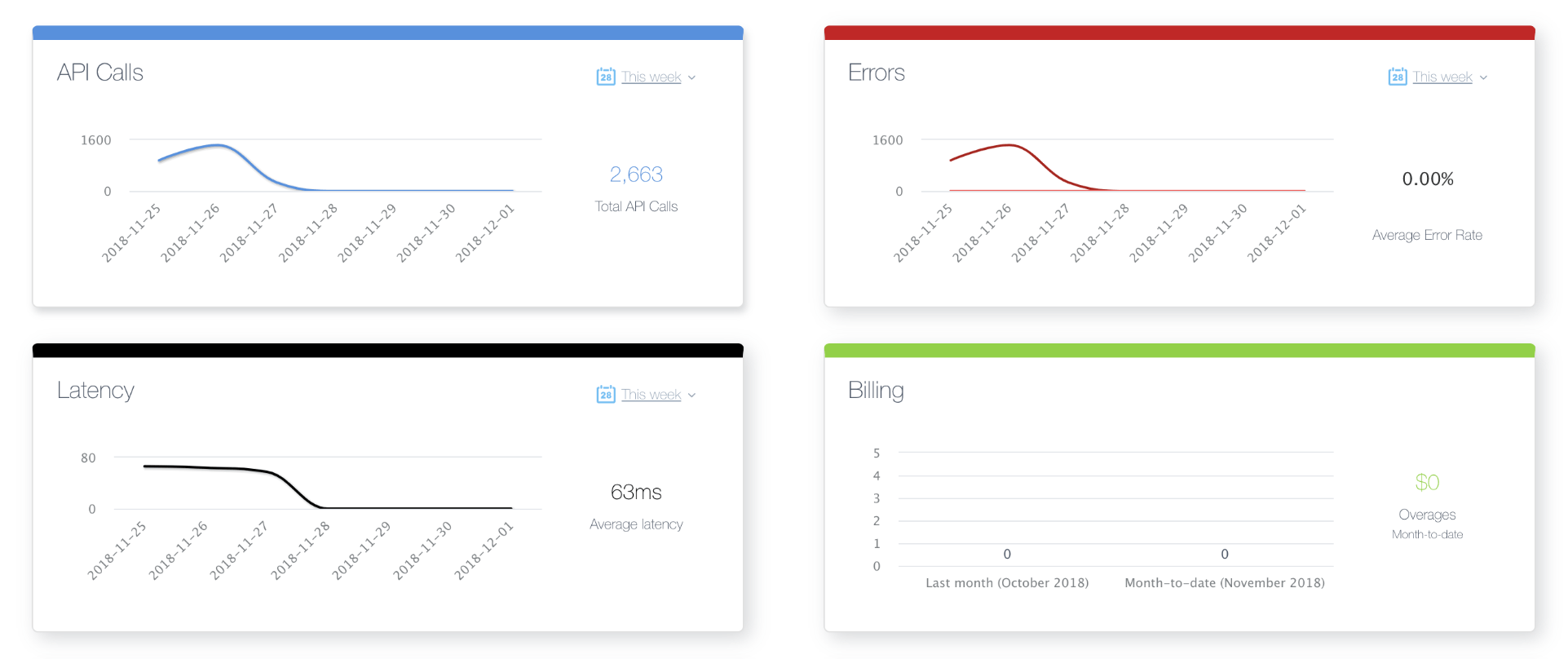External APIs can make software development easier and faster, but efficiently utilizing APIs becomes complicated within a team or company. Engineering teams are often siloed, and this separation is further compounded when teams have different leadership or distribution across many offices. The increasing popularity of telecommuting and remote working also adds to the disconnect between developers, even within the same team.
With these complications, it’s difficult for a developer on one team to know what APIs developers on other teams are already subscribed to and using. Much like using an internal API Hub, an API Hub for external APIs can have many benefits for your team, including:
1: Increasing Productivity
Being able to quickly prototype and create new products is essential. However, this is difficult especially as teams scale. Developers using valuable time to find and connect to a new API, when a similar solution has already been implemented, can have a negative impact on productivity. Having a central API repository can help teams across the company stay organized and know what resources are available for use.
It’s even possible to set your API Hub up to only display APIs that are already integrated into your app. This can also increase productivity since developers can immediately use these APIs and don’t have to go through the setup process.
2: Having a Single Dashboard to Monitor All API Usage
If external APIs are not centralized, there is also no clear way to analyze data and usage. This can be compounded if developers deploy APIs ad hoc, or use a large number of APIs. Without a central hub, an application may have 10 separate API developer dashboards you would need to visit to monitor API usage.
Having detailed analytics about usage is important to ensure APIs are performing as expected. Bringing external APIs into a centralized hub allows you to use one dashboard to monitor all of your APIs in one location.

3: Preventing API Duplication
Even though developer teams work on different projects, they will likely build similar functionality and would benefit from using the same APIs. For example, a web team and iOS team might both need a way to display a user’s credit score. If developers on the web team are unaware of what APIs have already been used by the iOS team or other teams within their organization, they may utilize a different API.
This duplication can cause complications since different APIs might return slightly different results. Sticking with the previous example, it would be confusing for a user if the website and the app both reported different credit scores as a result of using different APIs. Using a central hub can help developers identify what APIs are already being utilized, and prevent unnecessary duplication.
4: Effectively Manage Subscription Plans
Without a way to easily see what external APIs a company is already subscribed to, developers may create new subscriptions for the same APIs. Pricing varies depending on the API, but there is usually a benefit or discount for bulk usage. By having multiple subscriptions to the same API, you risk missing out on this benefit of reduced pricing.
Using a centralized API Hub makes it possible to see what external APIs are already being used, and manage subscriptions accordingly.
Ready to Create a Centralized API Hub?
Creating a centralized hub or repository is a great way to simplify the API sharing and collaboration process. Need an easy place to get started? Check out RapidAPI for Teams, a place to consume and collaborate on APIs.

Leave a Reply